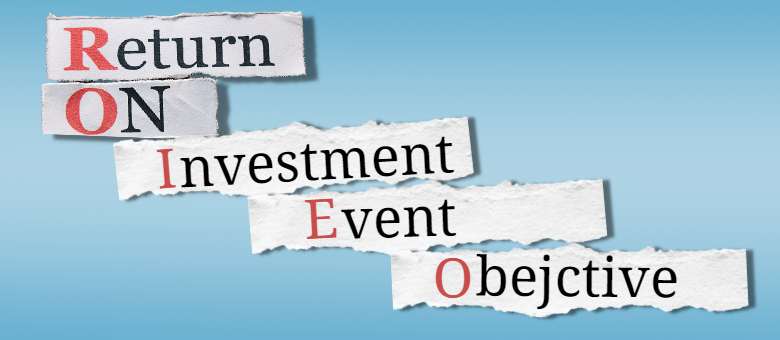In the world of strategic event management and strategic meetings management, it’s crucial to have a clear understanding of the different ways to measure the success of an event. ROI, ROE, and ROO are three key metrics that are often used to evaluate the effectiveness of an event and determine its value.
ROI, or return on investment, is a metric that is commonly used to measure the financial success of an event. It’s calculated by dividing the net profit of an event by the total cost of the event. In other words, it measures how much revenue was generated compared to the cost of hosting the event. While ROI is an important metric, it doesn’t take into account non-financial benefits, such as brand awareness or attendee satisfaction.
The lack of direct income associated with corporate events can make it difficult to measure ROI. As such, event managers need to find alternative metrics to attribute revenue to a particular event. This could include tracking client revenue within a certain period after attending the event. If a participant becomes a customer within that time frame, it can be assumed that the event contributed to the revenue and should be factored into the ROI calculation.
To calculate ROI, you need to determine the total cost of the event, including all expenses such as venue rental, catering, marketing, and staff. Then, you need to determine the revenue generated from the event, including participant revenues over your pre-determined timeline. Once you have these numbers, you can use the following formula to calculate ROI:
ROI = (Revenue – Cost) / Cost
For example, if an event cost $10,000 to host and generated $15,000 in revenue, the ROI would be:
ROI = ($15,000 – $10,000) / $10,000 = 0.5
This means that for every $1 invested in the event, $0.50 was earned in return.
When considering ROI in strategic event management, it’s important to focus on the event’s overall impact on the organization’s bottom line. This means evaluating the ROI of the event portfolio as a whole, rather than just individual events.
Return on Experience (ROE) is a metric that measures the overall impact and value of an event on the attendees. It is different from Return on Investment (ROI) because it focuses on the non-financial benefits of an event, such as attendee satisfaction, engagement, and brand perception. ROE is a critical metric for event managers to consider because it helps them understand the impact of their events on the attendees’ experience and overall perception of the brand.
In strategic event management, event managers must focus on the event portfolio as a whole, considering the different objectives and target audiences for each event. This is where ROE comes into play, as it helps to measure the effectiveness of each event in achieving its objectives and creating a positive experience for attendees.
For example, if an event portfolio consists of a series of conferences aimed at educating attendees on industry trends and best practices, the event manager may use ROE to measure the effectiveness of the events in delivering valuable content and providing opportunities for attendees to network and connect with industry peers.
Additionally, event managers may use ROE to set objectives for their events, such as increasing attendee engagement, improving brand perception, or enhancing the overall attendee experience. By setting these objectives and measuring them using ROE, event managers can ensure that their events are aligned with their overall strategic goals and are delivering value to their attendees.
ROO, or Return on Objective, measures the extent to which an event meets its specific objectives. This metric is particularly useful for events that have specific goals, such as product launches or educational conferences. ROO is determined by measuring the degree to which the event achieved its stated objectives, such as increasing sales or improving employee knowledge.
ROO is an important metric for corporate event managers because not all events are focused on generating revenue or achieving financial returns. For example, an event may be focused on building customer trust, knowledge transfer, or community building. In these cases, ROO can help measure the success of the event based on the specific objectives that were set.
ROO can be measured using a variety of methods, including surveys, feedback forms, and post-event interviews. These methods allow event managers to gather qualitative data on attendee satisfaction, engagement, and overall experience.
Effective strategic event management requires a balance of all three metrics. While ROI is important, it’s not the only measure of an event’s success. ROE and ROO provide important insights into the non-financial benefits of an event and can help event managers identify areas for improvement in future events.
By analyzing the feedback gathered from attendees, event managers can identify areas where they can improve the attendee experience, which can in turn increase ROE and ultimately lead to a higher ROI. Additionally, by setting clear objectives for each event and measuring the degree to which those objectives were achieved, event managers can make more informed decisions about their event portfolio and which events to include in their strategic meetings management plan.
Strategic event management relies heavily on ROI, ROE, and ROO. By measuring and analyzing all three metrics, event managers can gain a more complete understanding of the effectiveness of their events. Understanding these metrics can make comparing disparate events possible, and allows for making informed decisions about the event portfolio and investment.




